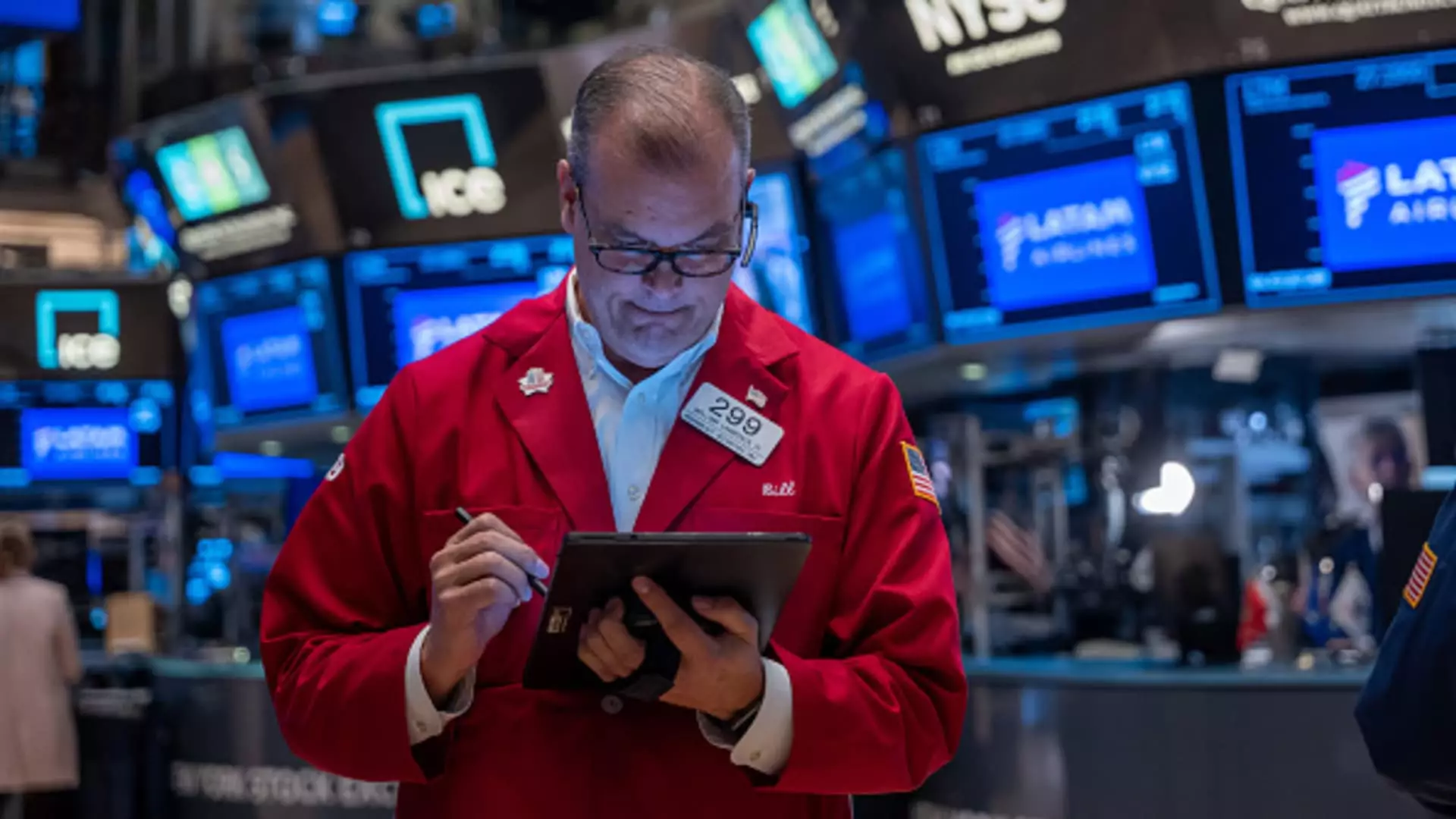In today’s ever-evolving financial landscape, staying informed about market movements and trends is crucial for investors and analysts alike. The “Stocks @ Night” newsletter serves as a vital resource, offering a recap of the day’s financial activities and a preview of what lies ahead. This article will dissect recent happenings in the stock market, with a particular focus on notable declines in major indices, Treasury yields’ fluctuations, and specific company performances that have garnered attention.
On a rather somber note, both the Dow Jones Industrial Average and the S&P 500 witnessed declines for the second consecutive day. This downward momentum reflects wider concerns that have gripped the market, likely influenced by macroeconomic factors and investor sentiment. Such fluctuations typically create ripples of anxiety among stakeholders, as they brace for potential shifts in market stability. The rise in benchmark Treasury yields, which exceeded 4.2% recently, serves as both a beacon and a warning—a signal of inflationary pressures that investors are carefully monitoring.
The disproportionate interest surrounding the 10-year Treasury yield illustrates a significant pivot in investor focus. This surge in search activity indicates a growing anxiety towards future rate hikes and potential economic stagnation. Interestingly, yields across different maturities exhibit a divergence that reflects differing market perspectives. For instance, while short-term Treasury yields showcased higher returns—like the six-month T-bill at 4.49%—the long-term outlook appears clouded with uncertainty.
Individual Company Insights
Investors are also keeping a keen eye on sector-specific developments, particularly with well-known brands like Starbucks and McDonald’s, which find themselves in the news due to operational challenges. Starbucks, for example, is witnessing a troubling downward trend with a 4% decrease in its stock during extended trading hours. The company’s decision to suspend guidance for fiscal 2025 coincides with sliding same-store sales, prompting investors to scrutinize its future performance more closely. Raising its dividend to 61 cents per share, up from 57 cents, may be an effort to reassure shareholders amidst troubling signs.
Conversely, McDonald’s shares faced a sharp downturn of around 6% during after-hours trading, prompted by an alarming CDC report linking the fast food chain to a spate of E. coli illnesses. The health implications not only pose a risk to public safety but also threaten to tarnish McDonald’s reputation—echoing similar past crises faced by competitors. The fast-food giant’s immediate response, which included the cessation of certain ingredient usages, points to a prudent approach in crisis management. However, the broader implications for brand trust and stock valuation remain to be seen as investors reassess their positions.
In addition to the challenges faced by these restaurant chains, significant earnings reports from other sectors are on the horizon. Companies like Coca-Cola and Boeing are slated to present their quarterly results, which could influence market reactions across sectors. For example, Coca-Cola’s stock has shown resilience with a 7% increase over the past three months, hinting at positive consumer sentiment towards its products despite broader market concerns.
Meanwhile, Boeing’s stock has demonstrated a noteworthy 5% increase in the preceding week, though it remains 40% below its 52-week high. The intricate dynamics of labor negotiations and marketplace competition paint a complex picture for the aerospace giant. As investors wait for insights from the company about its strategy and projections, the outcome may offer critical insights into the industrial sector’s trajectory.
As we await further earnings calls and economic indicators, several other companies are in the spotlight. The interest in tech giants, particularly IBM and Tesla, underscores the market’s evolving focus. While IBM has experienced a 26% increase over three months, reflecting positive momentum, Tesla demonstrates caution with a 13% decline over the same period.
It’s essential to recognize how broader market conditions affect individual stock performances. For instance, trends in construction and industrial sectors as reported by companies like United Rentals and Knight-Swift also hold significant weight in balancing the market’s overall health.
The stock market presents a complex tableau of challenges and opportunities. As investors navigate the waves of fluctuations in indices, yields, and corporate performances, one thing remains clear: vigilance remains paramount. The insights provided by resources like the “Stocks @ Night” newsletter empower stakeholders with the knowledge needed to make informed decisions. Keeping abreast of developments in both macroeconomic trends and individual company performances will be crucial as we step into the next phase of market activity.

